The 2004 HD Rear-Projection Face Off Page 5
This TV ran a close race with our ultimate winner. In fact, on day one, it was our winner. On day two, it even racked up three first-place votes, one more than our winner (no fair, don't look ahead). However, since two reviewers rated it in the middle of the pack on day two, its average dropped down to second place. In its own way, though, this TV is the equal of the statistical winner of the Face Off.

When we looked at all of the TVs in their uncalibrated state, there was little question among the reviewers that this Sony was the winner. It did a few things well and almost nothing badly. We couldn't say the same about most of the other TVs. The participants wrote that this was their favorite because it was more accurate, less noisy, and more detailed than its competitors. Several judges remarked that you could get up close to the TV and still enjoy a watchable picture.
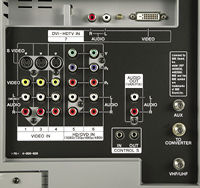 The TV's one Achilles heel most likely prevented it from winning: its black level. Almost every reviewer commented on the black level, which was noticeably higher than that of many of the other TVs. Their overall feeling about black level was in direct relation to where they ranked the TV. Chris said that the TV was still the best in the bunch, even though the picture was somewhat washed-out. Amy liked how good the TV looked with the football broadcast, which touches on this TV's real strength. With the lights on, the black level isn't as noticeable, and you just have a good TV with all of the benefits of LCD (light output, no burn-in, etc.). This makes it an excellent living-room TV that has to pull double-duty as an everyday TV and a home theater display. Every reviewer liked the Sony's detail, fleshtones, and lack of noise.
The TV's one Achilles heel most likely prevented it from winning: its black level. Almost every reviewer commented on the black level, which was noticeably higher than that of many of the other TVs. Their overall feeling about black level was in direct relation to where they ranked the TV. Chris said that the TV was still the best in the bunch, even though the picture was somewhat washed-out. Amy liked how good the TV looked with the football broadcast, which touches on this TV's real strength. With the lights on, the black level isn't as noticeable, and you just have a good TV with all of the benefits of LCD (light output, no burn-in, etc.). This makes it an excellent living-room TV that has to pull double-duty as an everyday TV and a home theater display. Every reviewer liked the Sony's detail, fleshtones, and lack of noise.
 With all of this praise, how could it not win? While three of our cadre still picked it first on day two, claiming that its consistent picture quality made up for the black level, the winner looked so good after calibration that it bumped the Sony out of the top spot. In fact, the Sony's scores on day one are almost the same as its scores on day two. Amy said it best in her day-two evaluation: "Still an excellent picture, but now it's not as impressive because the others look so good."
With all of this praise, how could it not win? While three of our cadre still picked it first on day two, claiming that its consistent picture quality made up for the black level, the winner looked so good after calibration that it bumped the Sony out of the top spot. In fact, the Sony's scores on day one are almost the same as its scores on day two. Amy said it best in her day-two evaluation: "Still an excellent picture, but now it's not as impressive because the others look so good."
The ergonomics were standard Sony fare—that is to say, the menus and remote were easy to understand and use. Most of the panelists liked the Sony's cabinet, and its table-top aspect won over several reviewers. Maureen liked the slim, attractive remote.
All in all, this is an excellent TV that deserves consideration if you're looking to buy an RPTV. It tracks well, has a good picture no matter the source, and rarely if ever looks bad. That said, it doesn't have an HDTV tuner and is slightly smaller and more expensive than our winner. Adrienne summed up the thoughts of each panelist who picked this TV first: "It's the best compromise. It will look good in high- and low-light situations. It's my pick for my room."

KF-60WE610 60-Inch HD Monitor $4,000
Sony Electronics
(800) 222-SONY
www.sony.com
Dealer Locator Code SNY
HT Labs Measures: Sony KF-60WE610 HD Monitor
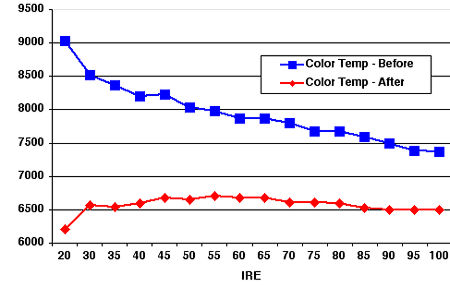
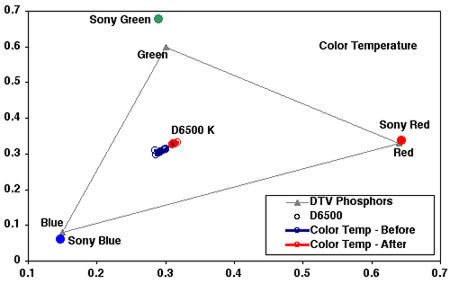
The top chart shows the gray scale of the KF-60WE610 relative to its color temperature at various levels of intensity, or brightness (20 IRE is dark gray; 100 IRE is bright white). The gray scale as set by the factory, in the pro mode, measures quite blue with dark images and drifts less blue (more red) with brighter images. After making adjustments using the Photo Research PR-650, the gray scale measures extremely close to 6,500 kelvin, the accurate color temperature, across the entire range. The bottom chart shows the gray scale (or color temperature) relative to the color points of the display's red, green, and blue liquid crystals. Red (x=0.644, y=0.338), green (x=0.290, y=0.677), and blue (x=0.147, y=0.060) are slightly off those specified by SMPTE. Green is oversaturated, as is blue, which is also slightly purple. The light output was approximately 45 foot-lamberts. The display has good DC restoration and a good color decoder. The KF-60WE610 displays out to DVD's limits and, using our Leader LT-446 HD generator, is capable of resolving 720p and 1080i out to the limits of its 1,386-by-788 chips.—GM
Toshiba 65HX93 (CRT, $3,700)
With little question, the Toshiba was our winner. On day one, it ranked second; after calibration on day two, it garnered two first-place and two second-place votes, and no one ranked it lower than fourth.
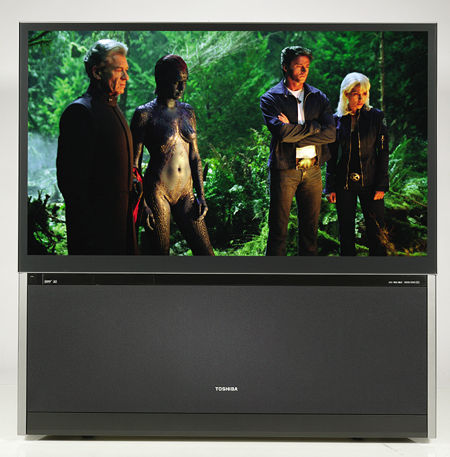
At first, the crew was hesitant to like this TV at all. The original seating arrangement put you closer to this TV than you'd normally sit. From such a short distance, the Toshiba wasn't well liked. However, when we altered the seating so that you could view the TV from a more-realistic distance (around five times the picture height), its ranking sky-rocketed. Amy put it best by calling it "the Monet of TVs." No one really considered this a problem, as you would never sit that close to a TV anyway. Otherwise, the few concerns that people had regarding color temperature and overall color accuracy were fixed with calibration. So, on day two, there was really nothing but praise, as long as you weren't sitting right on top of the TV.
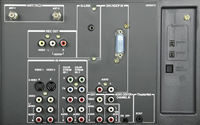 Three things stood out about this TV. The first was its excellent black level and black detail. The second was its color accuracy. The last was its excellent overall detail. These praises were echoed by every reviewer. If you get these three elements right, it's hard not to have a good-looking picture. Jerry mentioned that the Toshiba drew him in "with its sense of 3-D." Maureen simply said, "A great all-around set." Amy liked the sharp, precise detail, especially in the dark parts of an image. With the Without a Trace clip, she liked the fact that she could see the individual hairs on the people's heads. While it didn't have an intense light output like some of the fixed-pixel devices in the test, the Toshiba was able to put out over 50 ft-L without being overdriven.
Three things stood out about this TV. The first was its excellent black level and black detail. The second was its color accuracy. The last was its excellent overall detail. These praises were echoed by every reviewer. If you get these three elements right, it's hard not to have a good-looking picture. Jerry mentioned that the Toshiba drew him in "with its sense of 3-D." Maureen simply said, "A great all-around set." Amy liked the sharp, precise detail, especially in the dark parts of an image. With the Without a Trace clip, she liked the fact that she could see the individual hairs on the people's heads. While it didn't have an intense light output like some of the fixed-pixel devices in the test, the Toshiba was able to put out over 50 ft-L without being overdriven.
 Downsides? There weren't many. Glenn brought up a good point: Because the front screen acts like a mirror, you may notice some glare with daytime viewing. For this reason, he'd love the TV in a theater environment but not as much in a non-light-controlled living room. Aesthetically, the 65HX93 didn't get many compliments, but it didn't get any slams, either. In fact, almost every reviewer left that part of the questionnaire blank. How very neutral. One reviewer aptly referred to it as a standard TV cube.
Downsides? There weren't many. Glenn brought up a good point: Because the front screen acts like a mirror, you may notice some glare with daytime viewing. For this reason, he'd love the TV in a theater environment but not as much in a non-light-controlled living room. Aesthetically, the 65HX93 didn't get many compliments, but it didn't get any slams, either. In fact, almost every reviewer left that part of the questionnaire blank. How very neutral. One reviewer aptly referred to it as a standard TV cube.
Everyone seemed to like the backlit remote, which glows a lovely shade of blue. Glenn thought that the buttons were laid out in a logical fashion. Everyone also liked the onscreen menus' colorful, easy-to-understand graphics.
It's rare to find a product that's both a good performer and a good value. The 65HX93 tied for the largest set in the Face Off, it includes a built-in HDTV tuner, and its price is lower than the average for this test. As long as you don't plan on sitting nose-to-screen like your Mom always warned you not to, this TV is excellent. Jerry summed it up the best: "A videophile's dream TV. When you add in price and features, it's the hands-down winner."

65HX93 65-Inch HDTV $3,700
Toshiba America Consumer Products
(800) 316-0920
www.toshiba.com
Dealer Locator Code TOS
HT Labs Measures: Toshiba 65HX93 HDTV
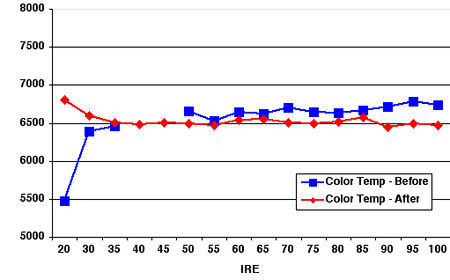
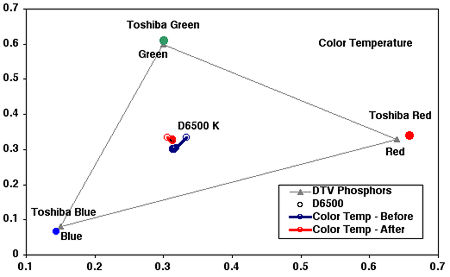
The top chart shows the gray scale of the 65HX93 relative to its color temperature at various levels of intensity, or brightness (20 IRE is dark gray; 100 IRE is bright white). The gray scale as set by the factory, in the warm color-temperature mode, measures red with dark images, too far off the black body curve to measure with mid-dark images, and just slightly blue with brighter images. After making adjustments using the Photo Research PR-650, the gray scale measures slightly blue with darker images but otherwise tracks quite well across the rest of the gray scale. The bottom chart shows the gray scale (or color temperature) relative to the color points of the display's red, green, and blue CRTs. Red (x=0.658, y=0.339), green (x=0.301, y=0.608), and blue (x=0.144, y=0.067) are close to those specified by SMPTE, although red is slightly oversaturated. This means that the display will accurately produce the colors available in the system. The light output was approximately 33 foot-lamberts. The display has decent DC restoration and a good color decoder. The 65HX93 displays approximately 480 lines (per picture height) with NTSC sources and, using our Leader LT-446 HD generator, is capable of resolving 720p signals out to 720 (pph) and 1080i out to 800 (pph).—GM
- Log in or register to post comments






























































